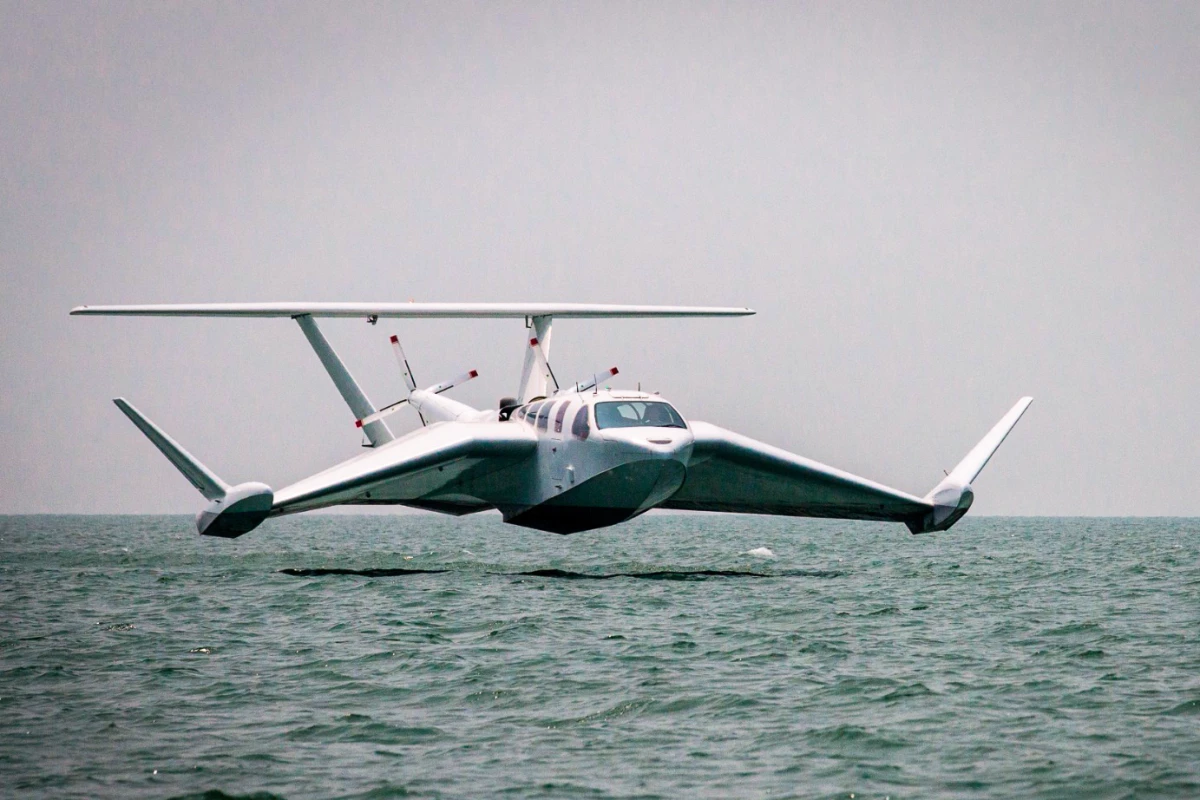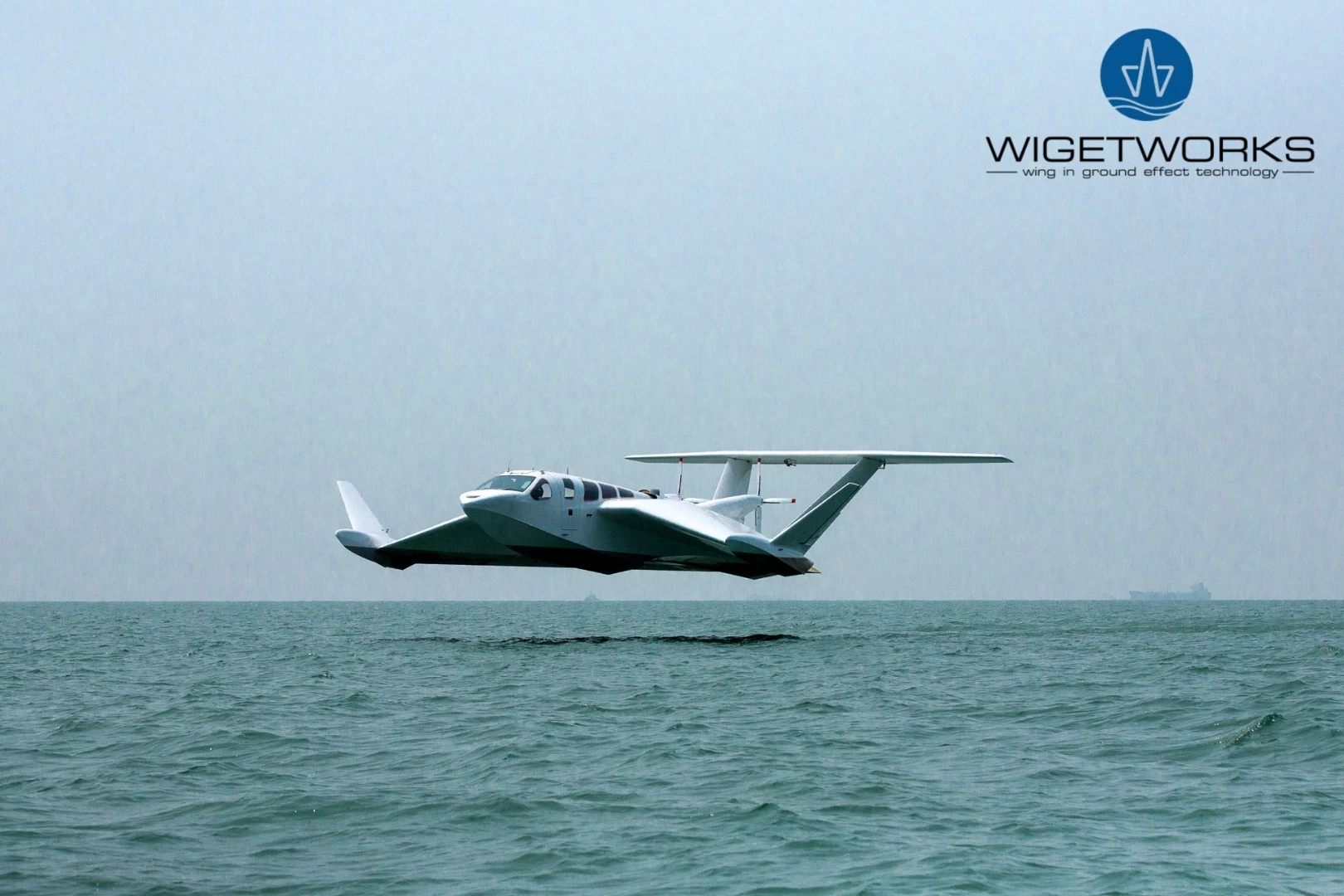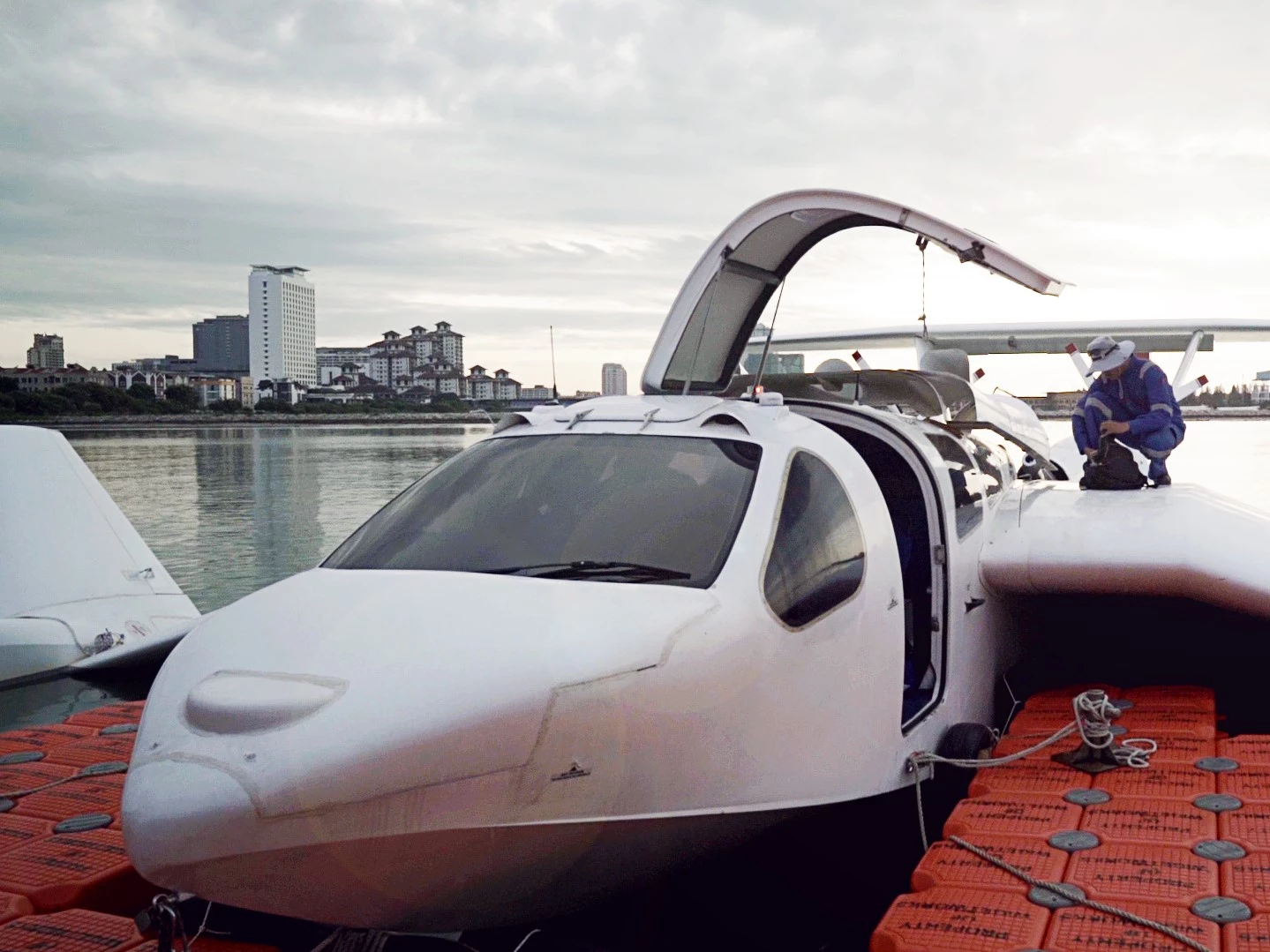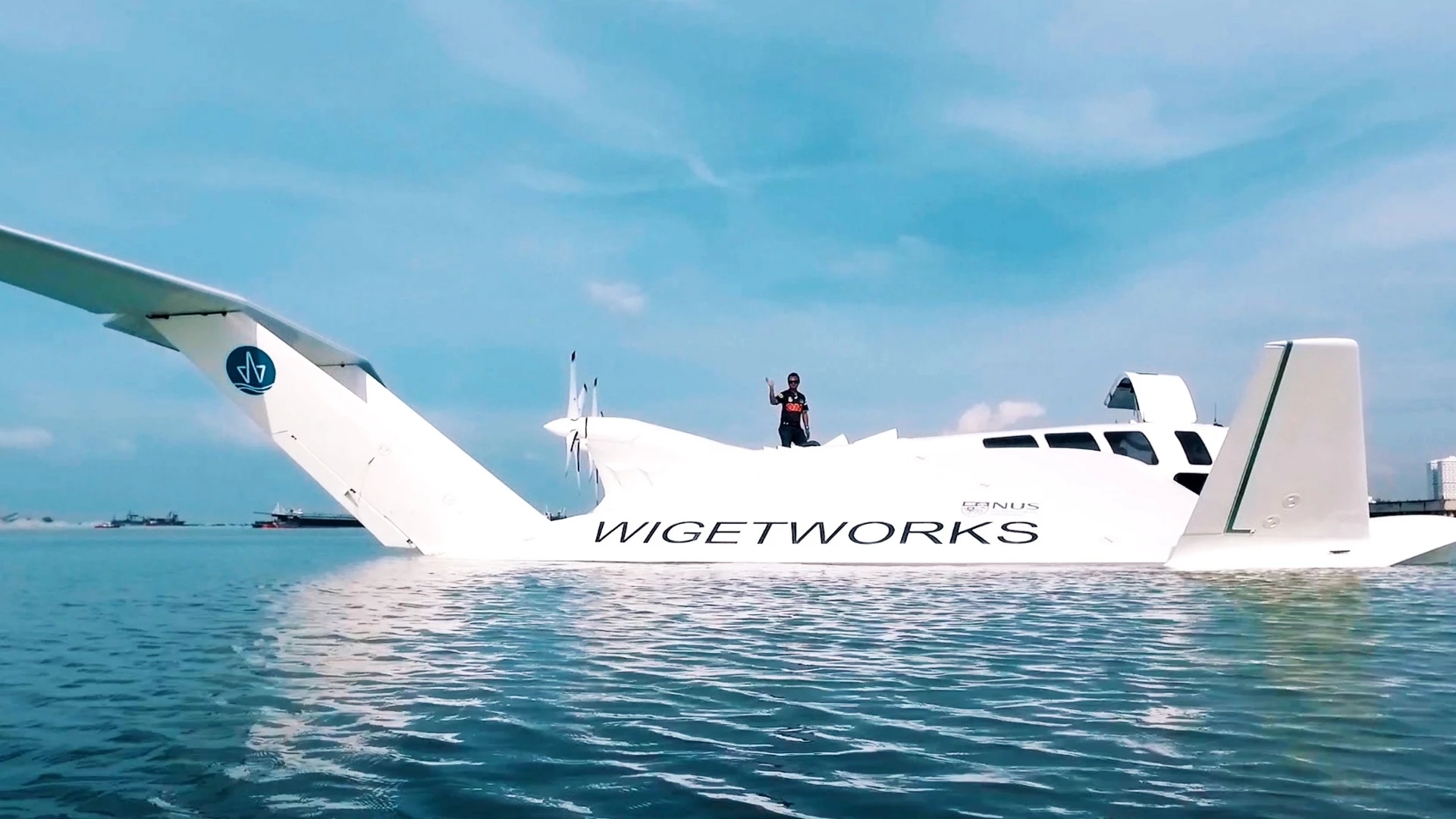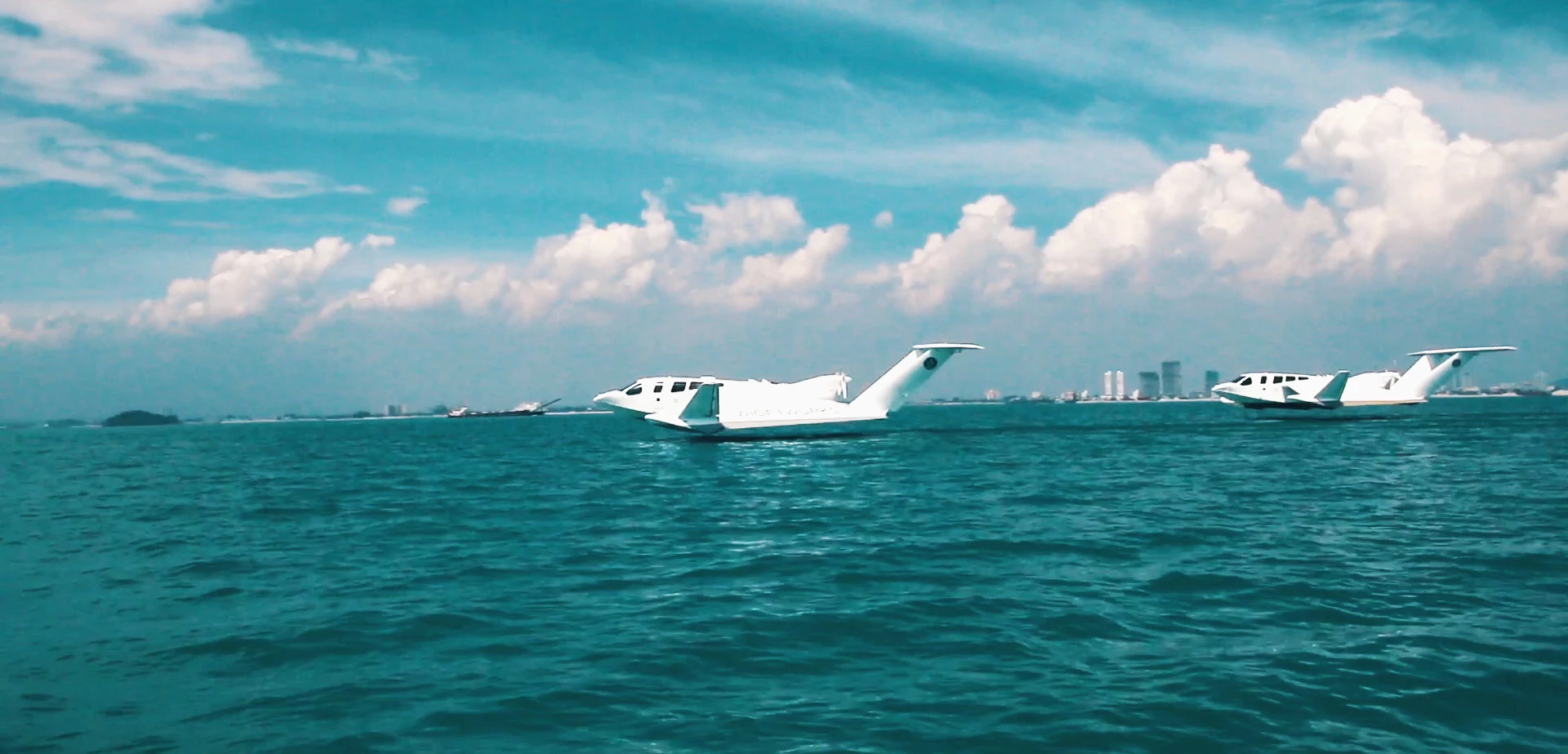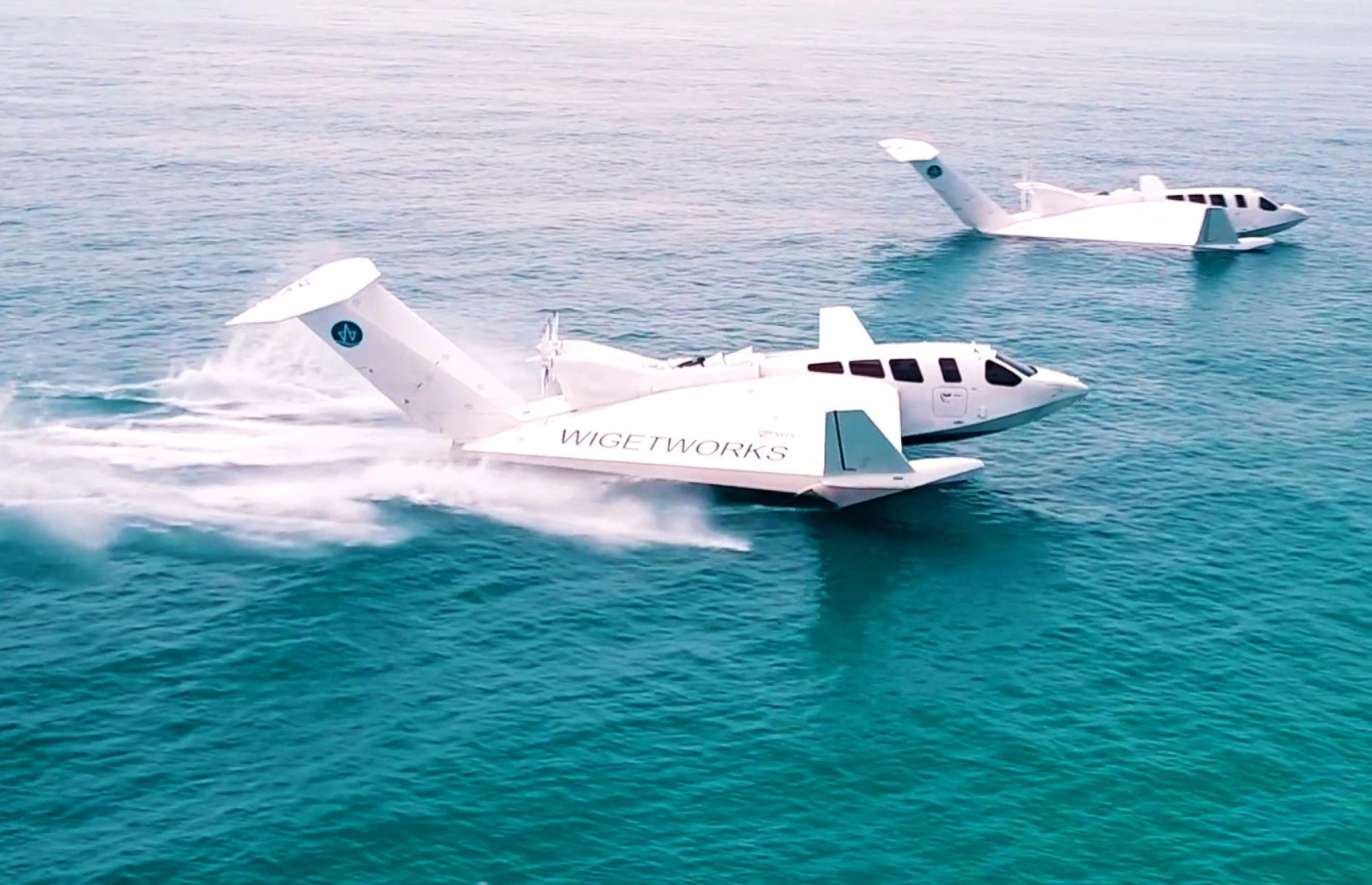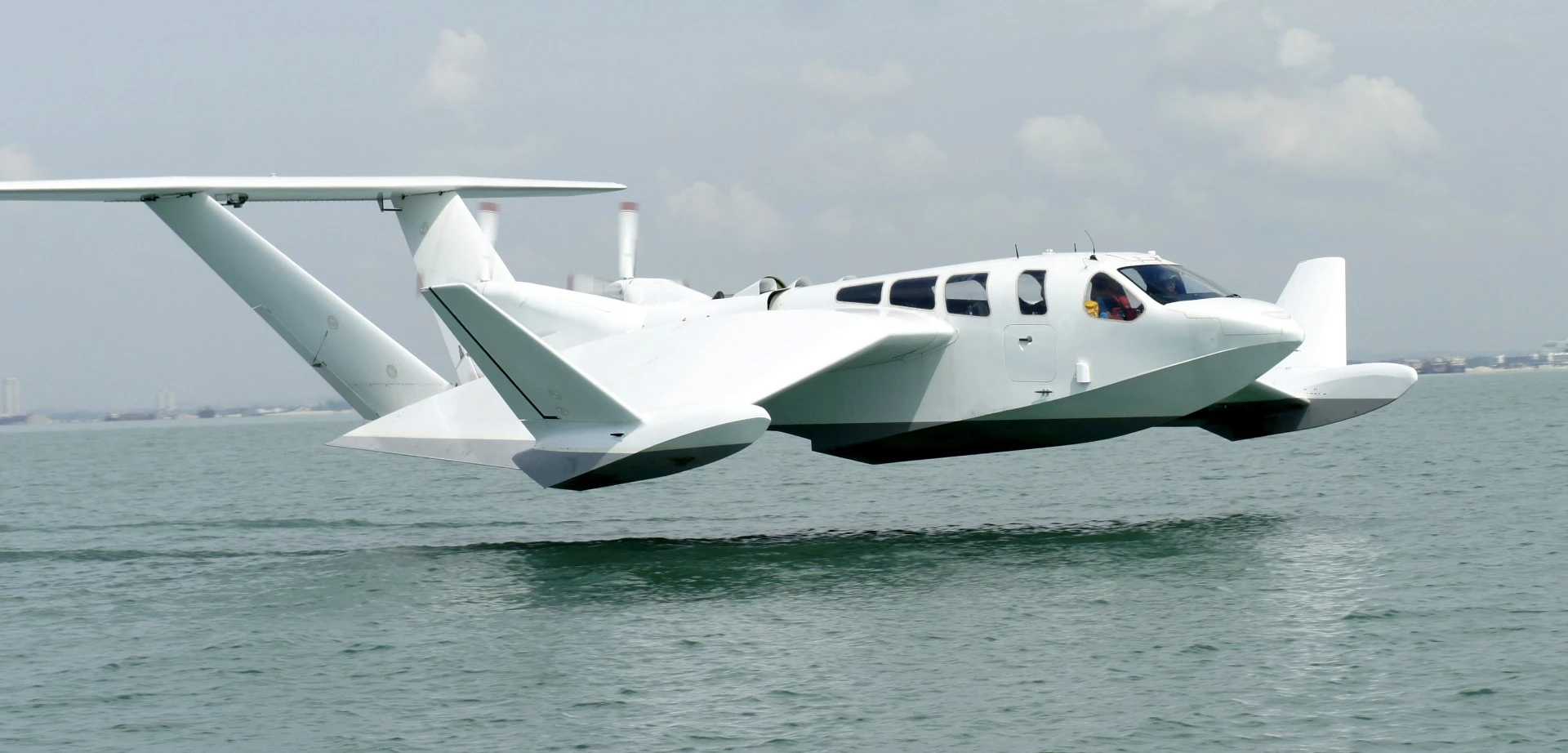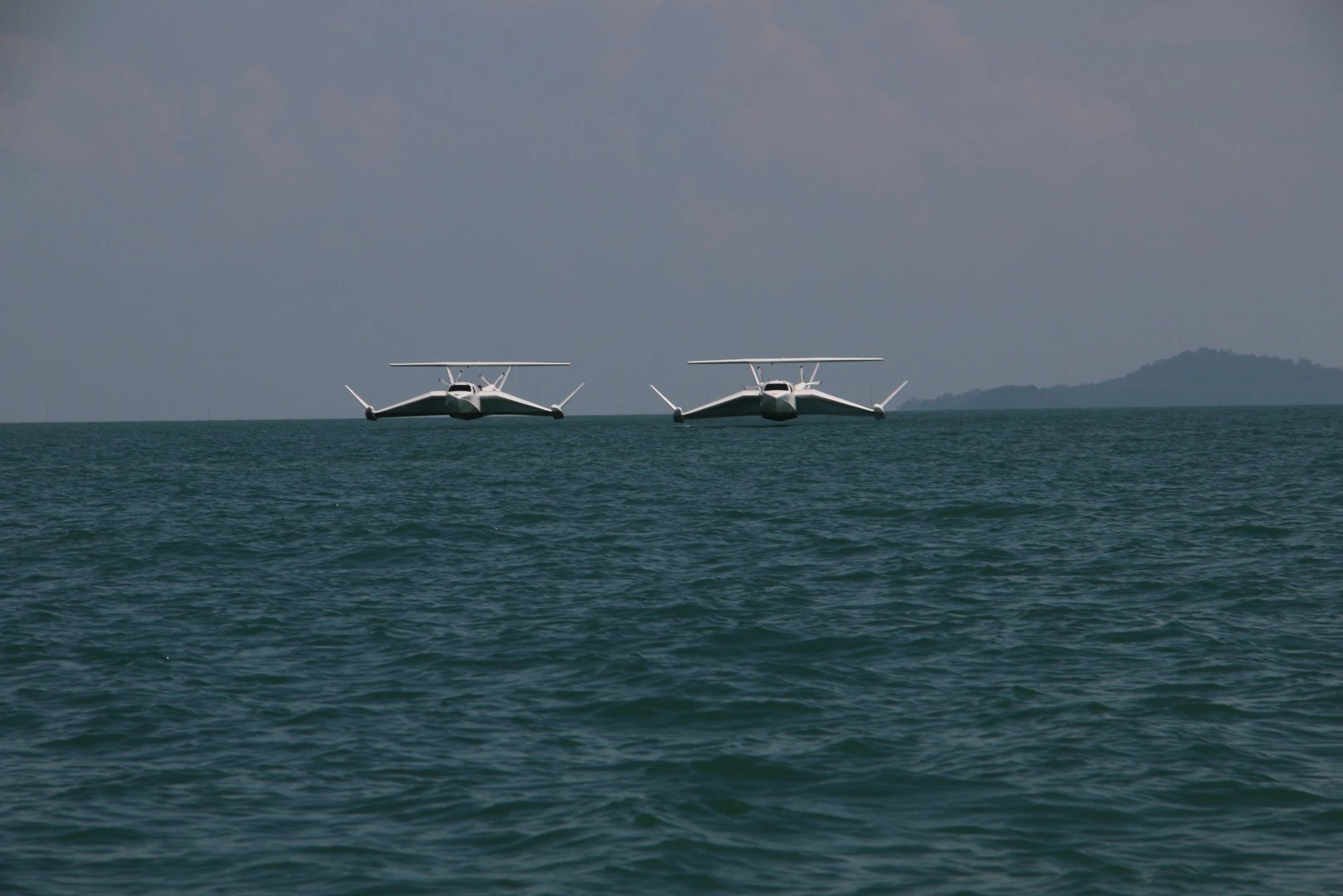A Singaporean company has resurrected a post-WW2 German design to commercialize a beautiful reverse-delta ground effect vehicle as a high-speed, high-efficiency ferry for six to eight passengers. The Airfish 8 hovers serenely between two and 23 ft (0.6 to 7 m) over the water and hits speeds of almost 120 mph (193 km/h).
The wing-in-ground effect is well understood at this point: when an aircraft is close to the ground, it operates significantly more efficiently than it does higher up. The additional air pressure underneath the aircraft at altitudes below half the wingspan adds extra lift, and you also get a corresponding reduction in lift-induced drag. The ground effect increases the closer you get to the surface, peaking at an altitude around 5 percent of the wingspan, where you can get a craft operating some 2.3 times as efficiently as if does in free air.
Numerous attempts have been made to capitalize on this effect for quick, efficient transport over water, but right now, the leading players appear to be Sea Wolf Express, which plans to begin a passenger ferry service between Helsinki, Finland and Tallinn, Estonia, using a Russian-built Ground Effect Vehicle (GEV) in 2019, and Wigetworks Private Limited, operating out of Singapore.

The history of Wigetworks' Airfish GEVs is interesting, with the company now producing its own aircraft, based on designs, patents and prototypes it bought from AirFoil Development GmbH.
AirFoil Development's Fischer Flugmechanik subsidiary was a vehicle for the GEV designs of Dr. Alexander Martin Lippisch, who pioneered the reverse delta/T-tail configuration in the 1960s. At the time, the chief competition was Russian-built Ekranoplans, with multiple wings, but these couldn't handle rough seas, because they'd come out of ground effect at altitudes just 10 percent of their wingspan. Lippisch's reverse delta design could operate at altitudes as high as 50 percent of its wingspan, meaning his craft could either handle rougher seas, or be made significantly smaller and more convenient to use with existing marine facilities.
And so to the Airfish-8. This latest incarnation of the Lippisch design is 56.4 ft (17.2 m) long, with a reverse delta wingspan of 49.2 ft (15 m) and a carbon fiber reinforced plastic body to help keep weight down. It uses a 500-hp (373-kW) V8 car engine, running on regular unleaded fuel, to drive two mid-mounted pusher props in front of a large T-tail.
It seats six to eight passengers plus baggage and two crew, and it's simple enough to fly that pilots can get certified for the Airfish in less time than for a regular pilot's license. Range is around 345 mi (555 km) with a top speed just under 120 mph (200 km/h) and a cruising speed more like 92 mph (148 km/h).

With the ability to take advantage of ground effect up to 23 ft (7 m) above the water, the Airfish-8 is untroubled when cruising over choppy water. That doesn't mean it likes taking off in bad weather, though – in high winds it would need to take off directly into the wind, meaning the passengers would cop an absolute pounding as they hit the waves head-on before reaching liftoff speed.
In fact, takeoff and landing will likely be the Airfish's biggest weaknesses, because those are the times when it's got to act like a boat. As soon as it hits takeoff speed and rises out of the water, everyone's in for a smooth, fast and efficient ride on a machine that looks like something out of Star Wars. Seriously, in flight, this thing is just beautiful to watch.
Safety-wise, these kinds of GEVs are pretty good. In regular operation, it'll rarely go more than 10 ft (3 m) above sea level, so in the case of some sort of failure – unlikely in itself given the simple powertrain – you can just glide it to a more or less regular landing and float about waiting for emergency services.
It does have to deal with some above-average loadings on takeoff and landing, as well as the potential for a wingtip to dip below the water surface on a turn, but in general it can be considered above average in terms of safety for an aircraft. The turning radius isn't terrific, though, so in low visibility conditions there's always the chance of running into a boat, which wouldn't be very safe at all.
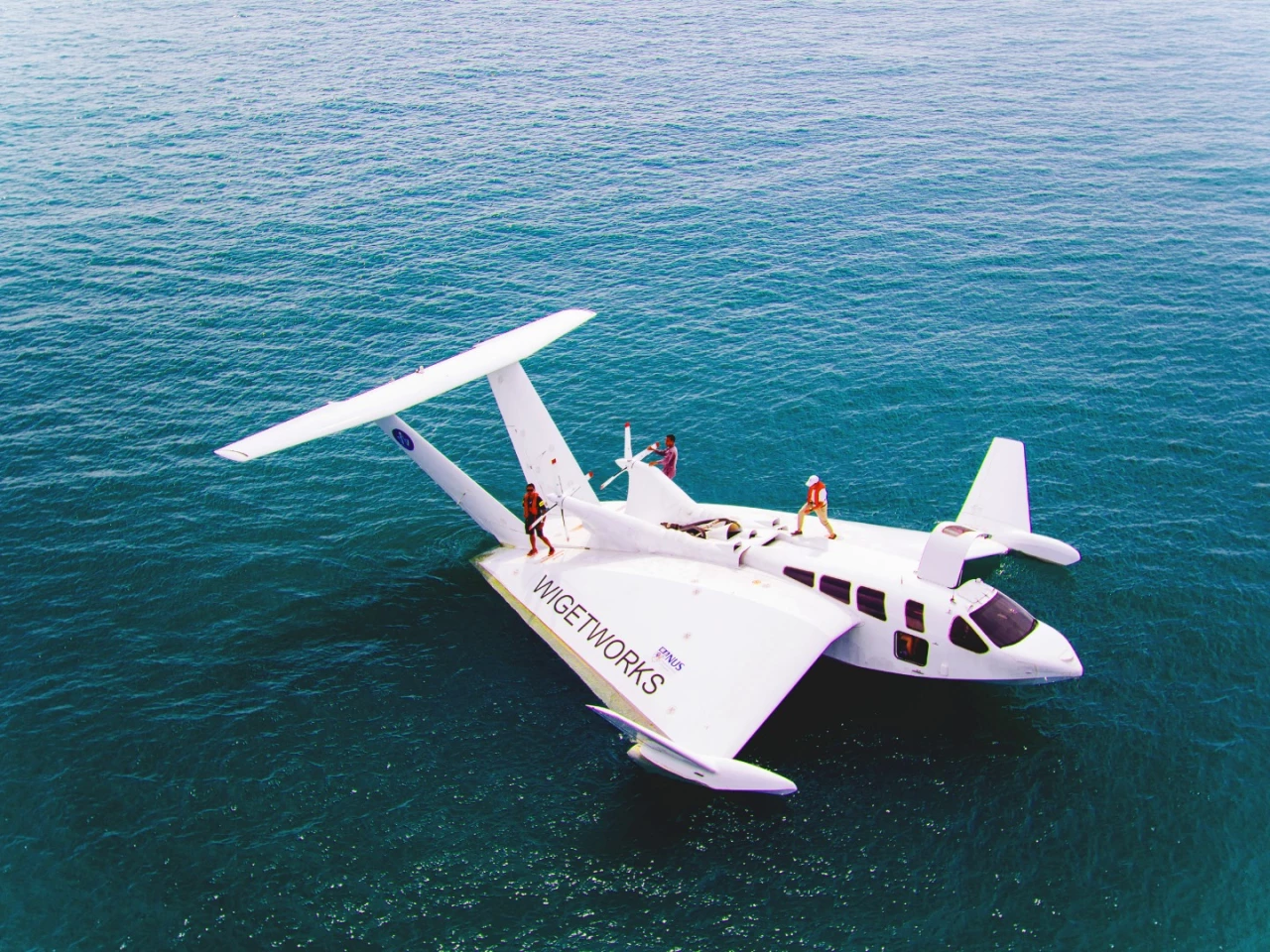
Still, you end up with something significantly faster and more efficient than pushing a boat through the water at speed, and more efficient and cooler to look at than a regular seaplane. It can also dock anywhere with a pier and a bunch of floating pontoons, without taking up a massively unwieldy space at the marina.
It's obviously only going to suit a limited number of use cases, but the Airfish looks absolutely mesmerizing in flight, and that alone might make it worth using as a high-speed, high-class ferry from the Singaporean mainland out to luxury island resorts in the region.
Check out a video below.
Source: Wigetworks
